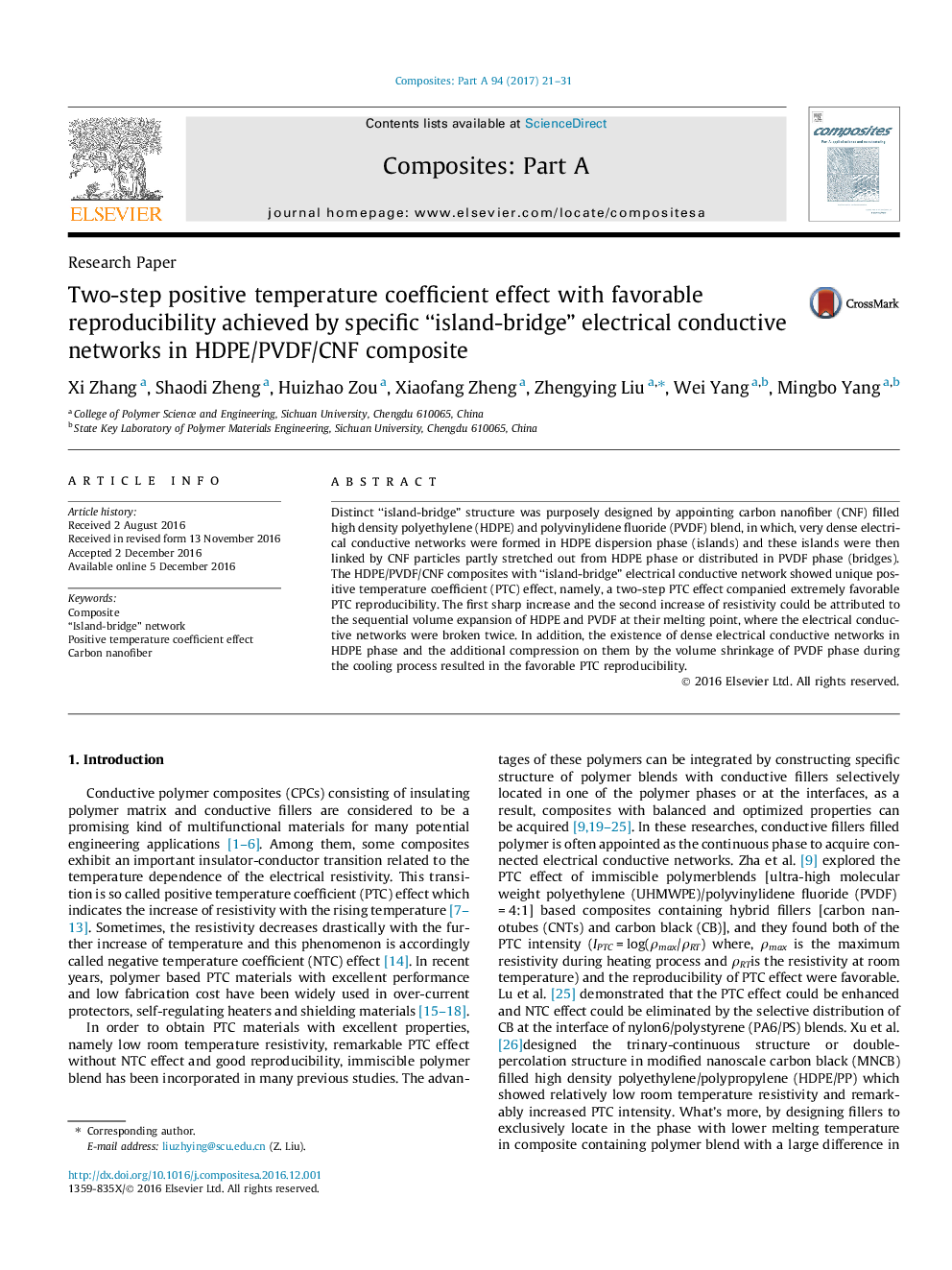| Article ID | Journal | Published Year | Pages | File Type |
|---|---|---|---|---|
| 5439604 | Composites Part A: Applied Science and Manufacturing | 2017 | 11 Pages |
Abstract
Distinct “island-bridge” structure was purposely designed by appointing carbon nanofiber (CNF) filled high density polyethylene (HDPE) and polyvinylidene fluoride (PVDF) blend, in which, very dense electrical conductive networks were formed in HDPE dispersion phase (islands) and these islands were then linked by CNF particles partly stretched out from HDPE phase or distributed in PVDF phase (bridges). The HDPE/PVDF/CNF composites with “island-bridge” electrical conductive network showed unique positive temperature coefficient (PTC) effect, namely, a two-step PTC effect companied extremely favorable PTC reproducibility. The first sharp increase and the second increase of resistivity could be attributed to the sequential volume expansion of HDPE and PVDF at their melting point, where the electrical conductive networks were broken twice. In addition, the existence of dense electrical conductive networks in HDPE phase and the additional compression on them by the volume shrinkage of PVDF phase during the cooling process resulted in the favorable PTC reproducibility.
Keywords
Related Topics
Physical Sciences and Engineering
Materials Science
Ceramics and Composites
Authors
Xi Zhang, Shaodi Zheng, Huizhao Zou, Xiaofang Zheng, Zhengying Liu, Wei Yang, Mingbo Yang,
